G. elegans has spread throughout the Indian peninsula, Sri Lanka and some parts of Pakistan. Its habitat is subject to dry seasons alternating with rainy seasons.
Classification
Kingdom: Animalia
Phylum: Chordata
Class: Reptilia
Order: Testudines
Suborder: Cryptodyra
Superfamily: Testudinidae
Genre: Geochelone
Species: Geochelone elegans
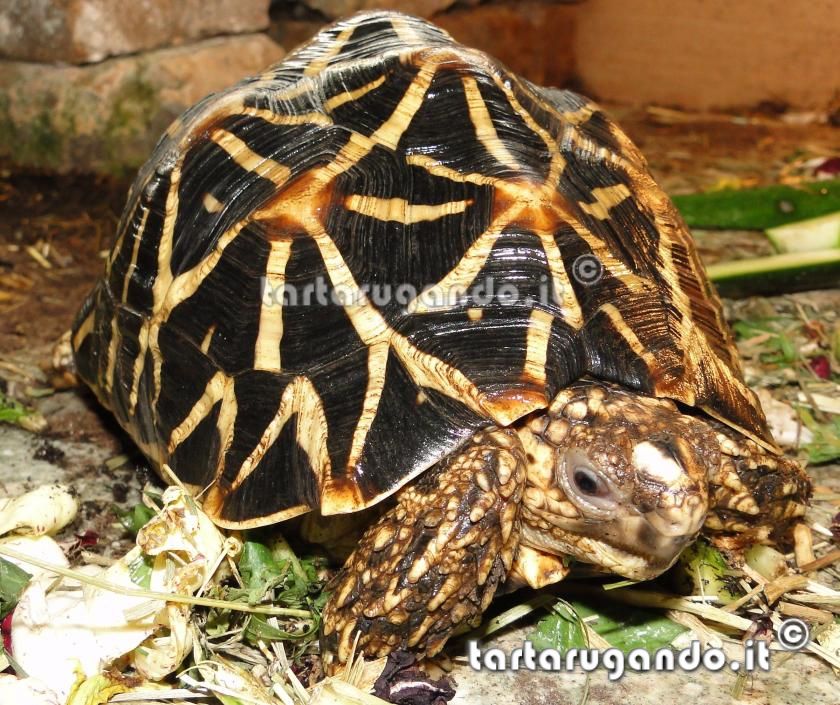
Physical Features
G. elegans is a species of medium size. The maximum dimensions in adult females are around 30 cm, but the average size is still about 25 cm for females and 18-20 cm for males.
The carapace has a rather rounded shape and scutes have a slight pyramiding, which is typical of this species and it has not to be confused with the pyramiding due to bad breeding conditions.
Each scute has a black background with a radial design out from the center, depending on the source you may have from 5 to 8 rays, the plastron follows the same design, the skin is ocher-colored with black spots.
Despite G. elegans has not subspecies, 3 different geographical variants are known, characterized by different patterns and sizes:
- The Sri Lanka Forms, presents from 5 to 7 thicker rays, it is the geographical variation that reaches larger sizes;
- The South Indian Form, similar to Sri Lanka Form, but it reaches smaller sizes;
- The North Indian Forms, presents from 7 to 9 thinner rays.
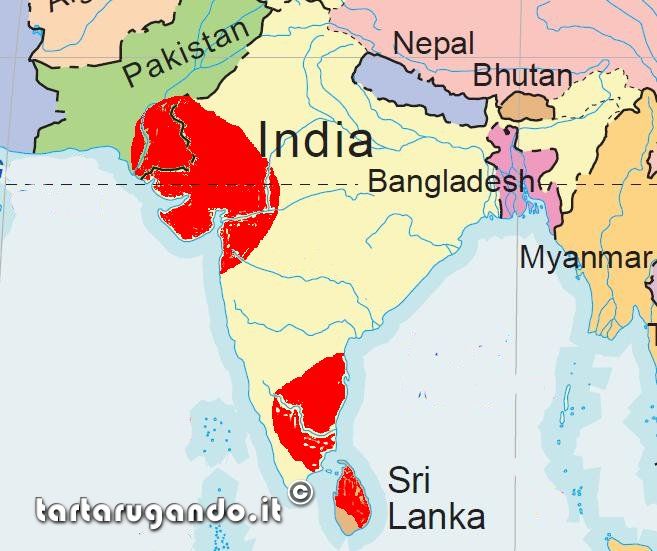
Areal of distribution for Geochelone elegans

Seasonal cycles areal G. elegans
Sexual dimorphism
Dimorphism in this species is very obvious: males are smaller than females, have a long tail, large at the base, a concave plastron, the overcaudal scute is turned inward, leaving little space between the end of the plastron to protect the tail.
Females reach the maximum sizes for this species, have a short tail and more space between the plastron and the overcaudal plaque, which is space required for the deposition.
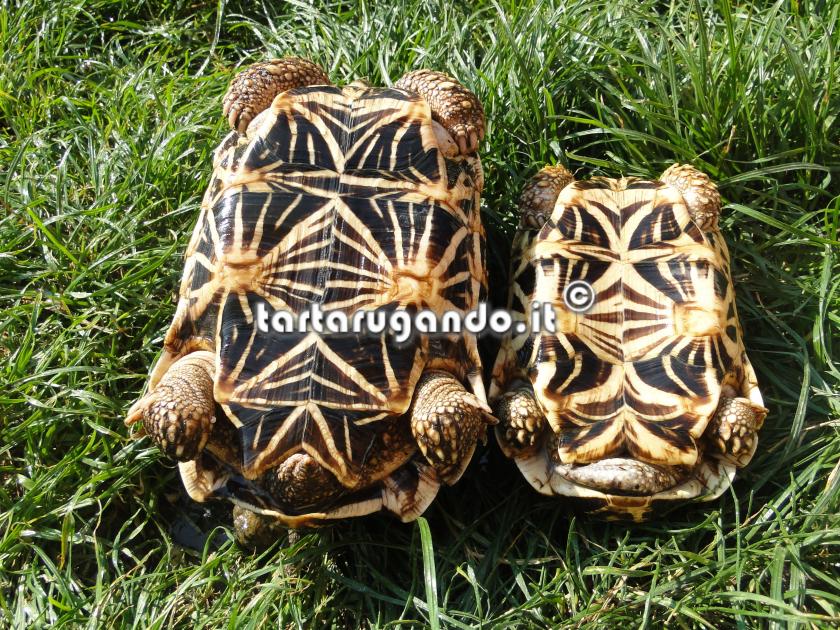
Female - Male
Feeding
G. elegans follows a completely vegetarian diet. We will feed wild herbs (plantain, dandelion ...) as a staple food, together with chicory, romaine salad, endive, escarole and radicchio.
It is appropriate, especially in the winter period, during which we will provide primarily purchased food, to add a reptile multivitamin 2 times per week, not more.
Breeding
This species does not hibernate, it is necessary to make a indoor accommodation during the cold season. Being a relatively peaceful species, it does not require huge spaces, for a trio of one male and two females may be enough of a terrarium 2 meters by 1 meter.
Given the shyness of the species, it will be necessary to provide several shelters where the turtles can hide and rest.
Daytime temperatures should be 30-32 ° C in the hot spot, and around 24-26 ° C in the cool area, during the night it will be appropriate to lower the temperature not below 20-21 ° C, as this species is very delicate especially with regard to temperature changes.
In small specimens it will also be necessary to create different zones with different degrees of humidity.
Even in the terrarium it will be necessary to simulate the wet and dry seasons to stimulate mating and reproduction.
The substrate may be composed of coconut fiber, peat moss mixed with soil or bark or chopped beech.
G. elegans need a container of clean water where animals can dive and drink, many breeders also use to induce G. elegans to hydrate with daily warm baths for about ten minutes, to stimulate appetite and manure as well as hydrate the turtle.
Combined with heat bulbs (ceramic or spot) are required UVA-UVB tubes or compacts, needed for the calcium assimilation, and they must be placed no more than 30 cm from the ground.
In the summer months, from June to September, it is possible and recommended to move the animals outdoors, always making sure to transfer them inside during the cooler days and nights.
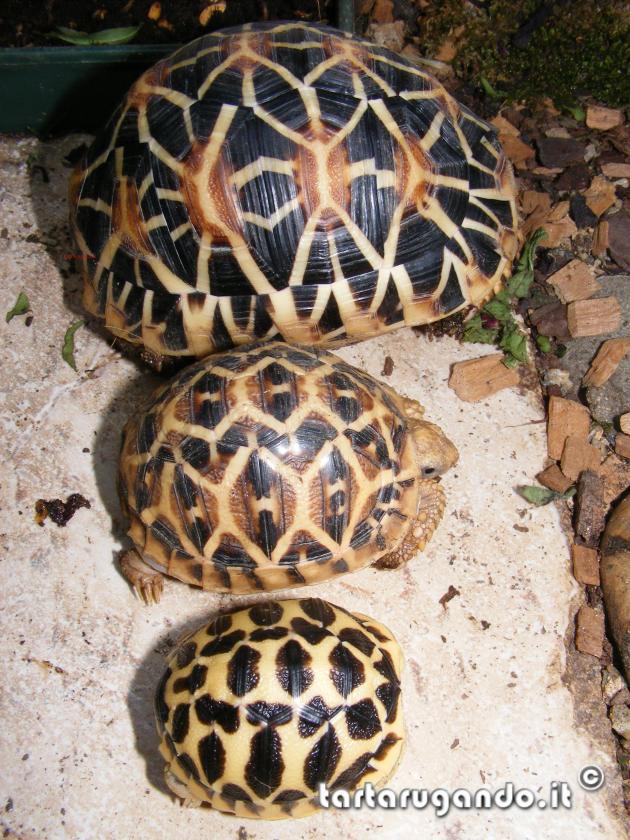
Mating and reproduction
Sexual maturity in G. elegans is reached quite early, around 7 years old and 1 kg for females, and 500-600 grams for males.
The courtship in this species is totally pacific, males do not need to force females to mate: females remain indifferent during the mount, keeping on eating or resting.
The pair take place throughout the year, but it is intensified during the wet season.
Once fertilized, the female will lay 3-4 times per year of 2-7 eggs per deposition.
The incubation periods ranges from 100 to 150 days, at a constant temperature of 29 - 30 degrees with a high enough humidity, around 80 to 90%.
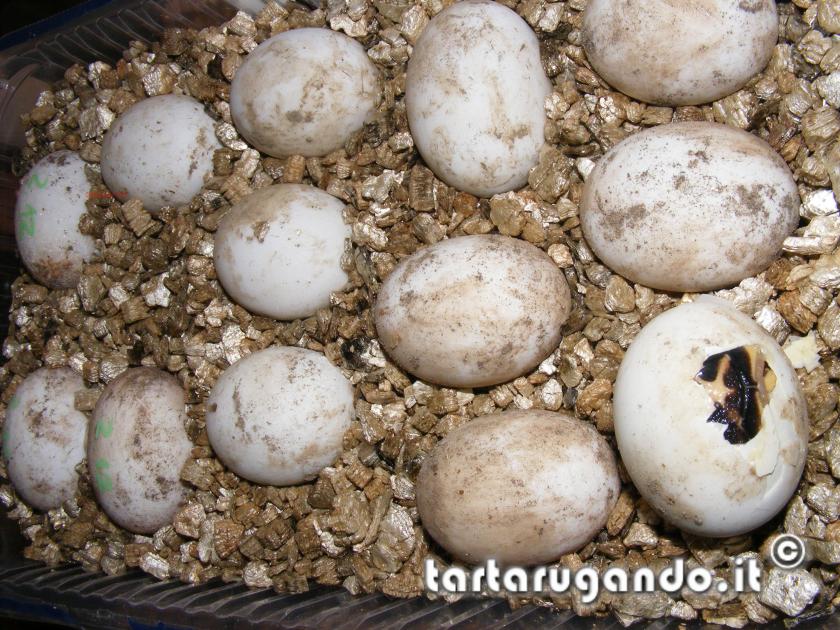
Breeding and care of baby specimens
For babies, we must prepare a terrarium with the same characteristics as that of adults, with particular attention for humidity. We must have a corner of the terrarium with constantly wet soil.
It is important that the temperature in the warmest area does not exceed 32 degrees, because the very small baby elegans heat up too much and the food ingested can ferment in the stomach and cause serious intestinal disorders. Nighttime temperatures should never go below 22 degrees.
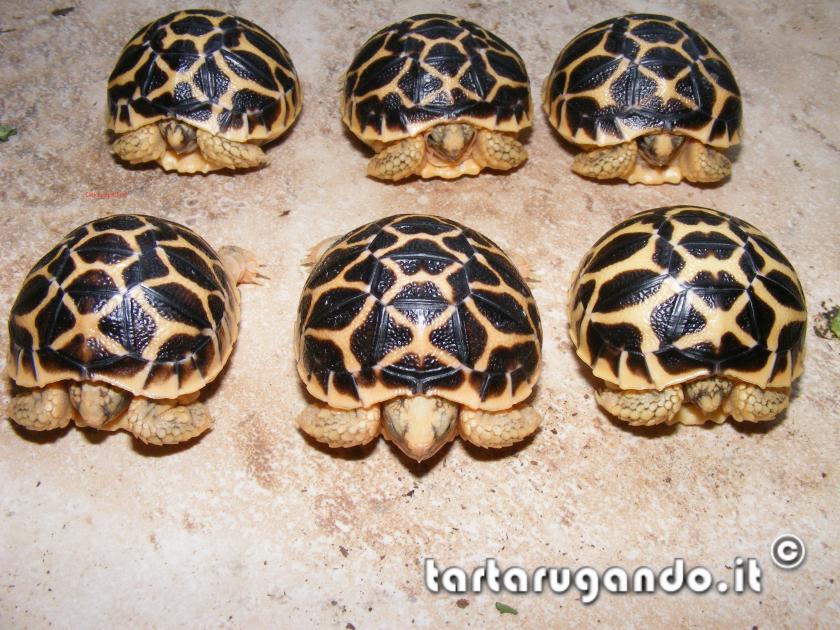
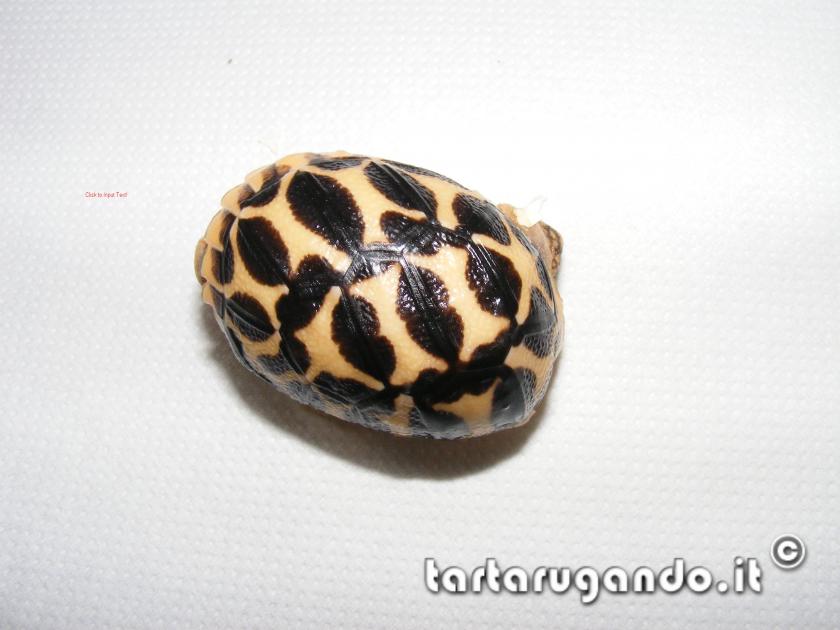
Notes
G. elegans is a unsuitable species for beginners, as it is very prone to pests and diseases by cooling, due to sudden changes in temperature and air currents.
Legislation
G. elegans is included in Appendix II of CITES
************************************************** ***************
Originally written by: fbolzicco
Translated by: Ugo
 Benvenuto su Tartarugando, il forum tematico specializzato nell'allevamento di tartarughe e di altri rettili.
Benvenuto su Tartarugando, il forum tematico specializzato nell'allevamento di tartarughe e di altri rettili.





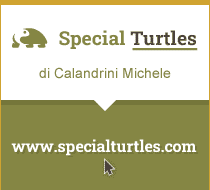
 Elenco delle sezioni
Elenco delle sezioni Elenco delle Categorie
Elenco delle Categorie Nuvola Tag
Nuvola Tag



 Articoli recenti
Articoli recenti